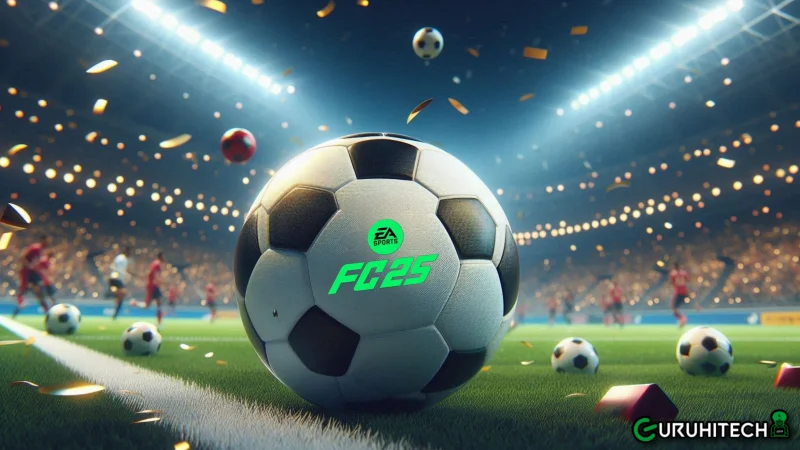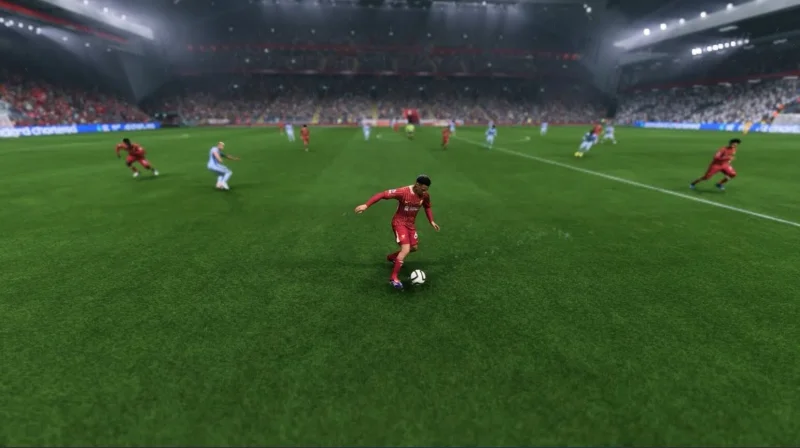FC 25 Tackling Guide – How to Tackle?
Mastering tackling in FC 25, the newest instalment in EA Sports’ football series, is a vital ability that can greatly impact your defensive strategy. If you are a beginner or experienced in the game, learning how to tackle effectively can assist in stopping opposition attacks, winning back the ball, and controlling the pace of the match. In EA FC 25, defence can occasionally be difficult and using the jockey button is insufficient. If so, you can apply the EA FC 25 tackling to defend in those scenarios. There are various types of tackling methods in the game that you can master in order to defend in the game.

The updated player movements in FC 25 create a more realistic experience when it comes to tackling, requiring increased attention to timing and accuracy. Moreover, improving your team with high-quality players can improve your defence as a whole, and a means to achieve this is to buy FC 25 coins to obtain superior players and enhance your team’s performance on the field. This guide will examine the various tackles in FC 25, the optimal times to utilize them, and tricks for perfecting your timing. You can enhance your gameplay, stop opponents, and generate more opportunities for your team by mastering the art of effective tackling.
Tackling
In football, successful tackling requires precise timing, strategic positioning, and accurate anticipation. The same is also true in FC 25. Being too eager in challenges can make you vulnerable, but well-timed tackles can result in quick counterattacks. To succeed in winning the ball, you must pay attention to your opponent’s actions and react accurately.
Tackling Controls in FC 25
To effectively tackle EA FC 25, it’s important to know the controls. The game features three main types of tackles: the standing tackle, the slide tackle, and a new advanced option that changes the contain button into a different tackle. To execute a sliding tackle, simply push Square on PlayStation or X on Xbox. For a standing tackle, press Circle on PlayStation or B on Xbox. Lastly, you can use the contain function by pressing X on PlayStation or A on Xbox, which now has an advanced tackling feature in this version.
We will begin by examining the primary types of tackles in the game.
Standing Tackle
The standing tackle is frequently used and typically viewed as the most effective type of tackle. You should employ the standing tackle when facing an opponent in your penalty area or in a one-on-one defensive scenario where winning the ball is crucial. Nonetheless, since the standing tackle is simple to perform, it can be utilized in various circumstances. The standing tackle is the technique employed to gain possession of the ball from the opponent without falling to the ground. It is effective when you are close to the ball carrier and want to maintain your defensive shape.

You can use a Standing Tackle in the following situations:
- When facing an opponent up close in one-on-one situations, the standing tackle is typically the most secure choice. It enables you to gain possession of the ball without taking a chance with a dangerous slide tackle.
- When engaging in the jockeying (LT/L2) function, it enables you to stay in a favourable position and pressure your opponent to make an error. When you are in proximity, utilize the standing tackle button to successfully regain possession.
- In the midfield or the penalty area, where there are numerous players present, the standing tackle is perfect as it allows you to remain upright and prepared for the next action.
Sliding Tackle
The sliding tackle is a more daring and risky technique. It is especially helpful when you need to stop an opponent’s run or block a shot because it allows you to cover more ground more rapidly. Therefore, Sliding tackles carry some risk, but when executed well, they can change the game. A poorly executed slide may result in fouls, yellow or red cards, and potentially lethal free kicks for the opposition.
You can use a Sliding Tackle in the following situations:
- A sliding tackle could be your greatest line of defence if an opponent is sprinting toward your goal, and you are out of position. But use caution-missing will expose a large gap in your defence.
- A sliding tackle can cut down the angle and stop the shot if an opponent is getting ready to shoot and you are not close enough to make a standing tackle.
Advanced defending
Finally, there is the latest feature introduced in EA FC 25: Advanced Defending. It transforms your X button on PlayStation or A button on Xbox into a different tackling technique. By pressing X on PlayStation or A on Xbox, your player will try to make shoulder contact with the opponent and try to gain possession of the ball. Learning this type of tackle is highly suggested as it is likely the most effective way to regain possession of the ball from your opponent.

Essential Tips for Effective Tackling
- Doing tackles too early is one of the common errors players make. Be patient and be prepared for the perfect opportunity. Allow your opponent to initiate, then pursue and seize the ball once you are certain of victory.
- Predicting your opponent’s next move is vital. Be observant of their physical cues and how they place themselves. Will they pass, dribble, or shoot? Comprehending this can assist you in timing your approach flawlessly.
Conclusion
Mastering the art of tackling in FC 25 is a crucial skill that can determine the outcome of a match. By becoming proficient in timing, understanding when to opt for standing or sliding tackles, and consistently practising, you can develop into a strong defender.
Ti potrebbe interessare:
Segui guruhitech su:
- Google News: bit.ly/gurugooglenews
- Telegram: t.me/guruhitech
- X (Twitter): x.com/guruhitech1
- Bluesky: bsky.app/profile/guruhitech.bsky.social
- GETTR: gettr.com/user/guruhitech
- Rumble: rumble.com/user/guruhitech
- VKontakte: vk.com/guruhitech
- MeWe: mewe.com/i/guruhitech
- Skype: live:.cid.d4cf3836b772da8a
- WhatsApp: bit.ly/whatsappguruhitech
Esprimi il tuo parere!
Ti è stato utile questo articolo? Lascia un commento nell’apposita sezione che trovi più in basso e se ti va, iscriviti alla newsletter.
Per qualsiasi domanda, informazione o assistenza nel mondo della tecnologia, puoi inviare una email all’indirizzo [email protected].
Scopri di più da GuruHiTech
Abbonati per ricevere gli ultimi articoli inviati alla tua e-mail.
